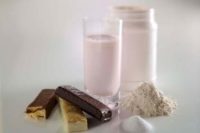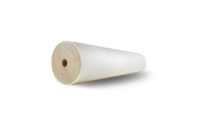Nanofiltration (NF) technology is commonly used for many processing techniques throughout the dairy industry. The removal of salts is important for preventing scaling and build-up on evaporators, and facilitating the production of high-quality lactose and whey products.
Given the demand for a reduction in energy consumption and an increase in efficiency and quality, this study came about to examine the performance of Synder’s nanofiltration membranes for use in dairy applications such as lactose decalcification, whey concentration and deashing. Both tests on the acid whey UF permeate and acid whey powder highlight the advantages with respect to flux and greater Ca2+ passage for the NFS membrane, drawing attention to the potential for it to improve the overall quality and efficiency of whey processing.
Testing procedures for lactose decalcification
Two independent trials consisting of NFX-2B-2540M and NFS-2B-2540M elements were used for the lactose decalcification testing. Each element, containing 28ft2 of active membrane area, was compacted prior to whey testing. UF whey permeate was generated for each run, starting with 8wt% acid whey (1% total protein). Synder’s ST-5B-2540M (PES 10kDa) elements in a NF-202-2540 cross flow filtration system at 120psi were used to produce the UF whey permeate (see Table 1, above).
A NF-201-2540 high pressure system was used to run the NFX and NFS 2540 elements with acid whey UF permeate at 450psi/2gpm/25°C. Feed and permeate samples were collected at volumetric concentration factors (VCF) from 1x to 3x. A full acid whey analysis was performed for all samples.
Testing procedures for whey concentration and deashing
Independent acid whey trials were conducted using NFX-3B-2540M and NFS-3B-2540M elements, each containing approximately 20ft2 of active membrane area. Each element was compacted and validated prior to testing. All trials consisted of a feed composition of 8wt% acid whey (1% total protein).
A NF-201-2540 high pressure system was used to run all of the 2540 NF elements at 490psi/2gpm/25°C. Feed and permeate samples were collected from 1x to 3x concentration factors, and sample analysis was completed to determine calcium rejection performance.
Results of the lactose decalcification testing
Preliminary testing was performed using Synder’s ST 2540 elements run simultaneously at 120psi to obtain the necessary UF acid whey permeate needed for each NF run. Table 1 shows the product specifications for the acid whey powder used to generate the UF permeate.
Two independent trials were conducted for each membrane type, and all elements were compacted and validated prior to performing the lactose decalcification testing. Table 3 shows the full analysis for the acid whey samples.
On average, NFS exhibited approximately 20-30% higher flux throughout the duration of the testing period and had 10-15% greater calcium passage compared to NFX (Figure 1). Similar values were obtained for ash, total solids, potassium, sodium, chloride, and lactose concentrations.
Figures 1 and 2 further illustrate the difference in flux and calcium rejection values obtained for NFX and NFS.
Results of the whey concentration and deashing testing
After compaction and validation, 15gal of 8wt% acid whey powder in RO water was recirculated for approximately 20 minutes, prior to NF permeate collection. Samples of feed and permeate were collected from 1x to 3x VCF, and both elements were testing using a 46mil diamond spacer.
Table 3 shows the full analysis completed at Synder HQ for all the samples. Both elements exhibited similar flux throughout the duration of the experiment, while NFS showed significantly higher Ca2+ passage rates at all concentration factors.
Figure 3 further illustrates the flux performance for NFX and NFS 2540 elements, both with a 46mil spacer. Both NF elements reached approximately the same ending permeate flux rate by 3x VCF.
Figure 4 highlights the calcium rejection performance for both elements. As observed previously, NFS showed overall lower calcium rejection compared to NFX.
Conclusions of the membrane tests
The results of the lactose decalcification testing indicate the superior flux performance and calcium passage for NFS compared to NFX in a feed stream comprised of acid whey UF permeate. On average, NFS exhibited a 20-30% higher flux than NFX, and approximately 10-20% greater calcium passage. Lactose rejection was high for both membrane types and other acid whey rejection values such as total solids, ash, and lactic acid remained similar.
The results of the whey concentration and deashing testing also highlight the potential for NFS to be used for whey concentration and decalcification applications in the dairy industry. Though the permeate flux rate reached similar values by the end of the run, there was a notable difference in calcium rejection performance between NFS and NFX.
Given these results, the NFS membrane has the potential to be used for both lactose concentration and whey concentration and deashing in the dairy industry. NFS offers an advantage for flux when tested with UF acid whey permeate, and also offers a significant improvement in calcium passage when tested with both processed and unprocessed whey.








